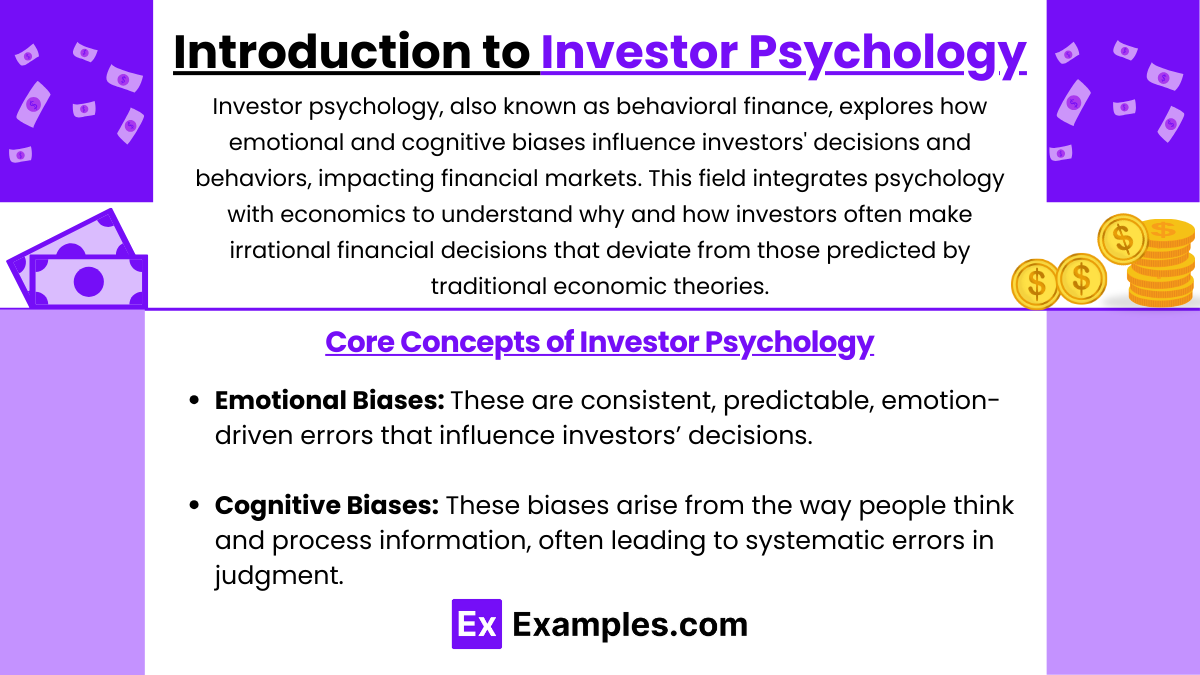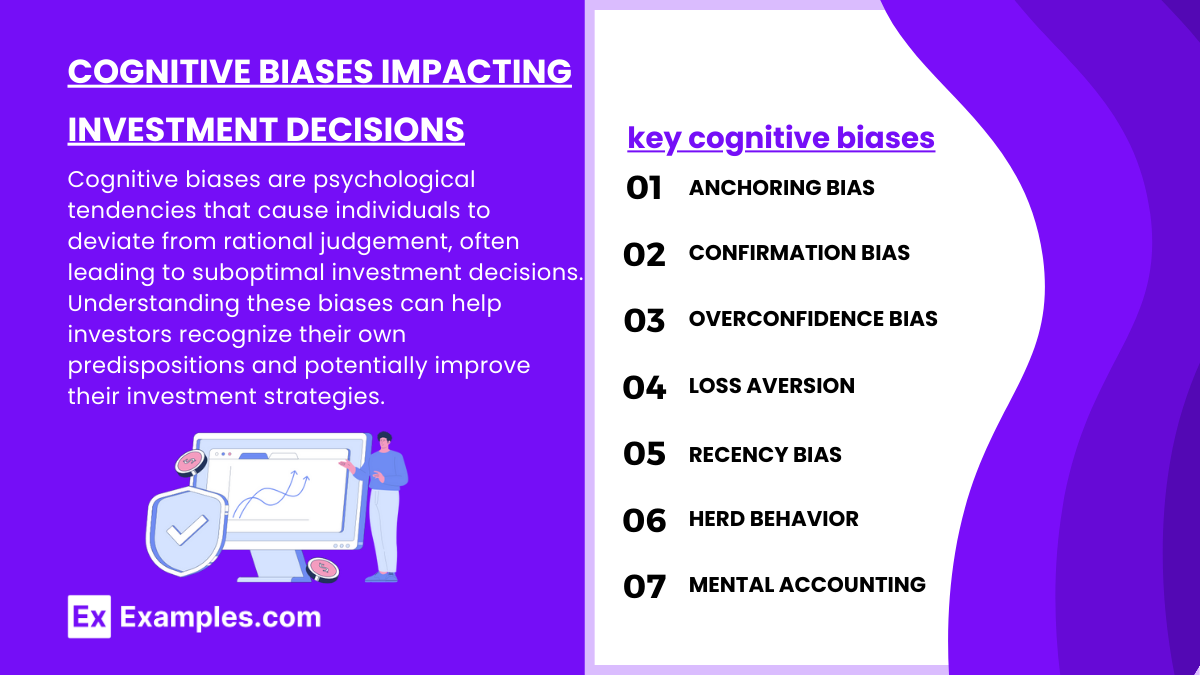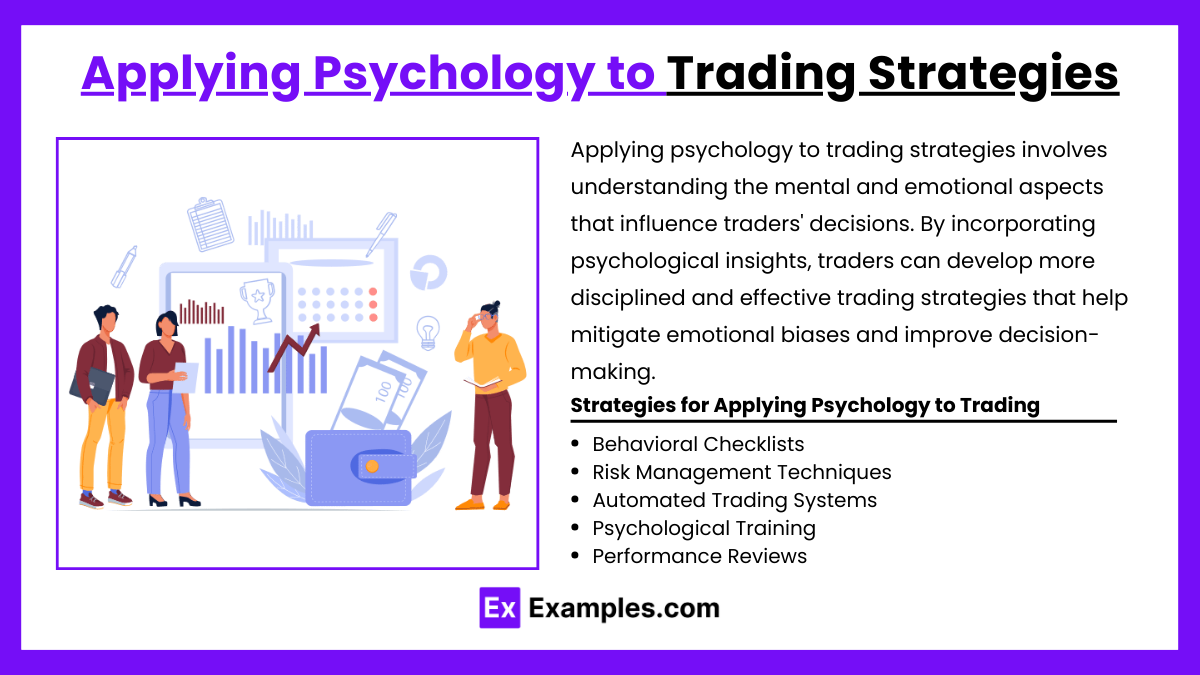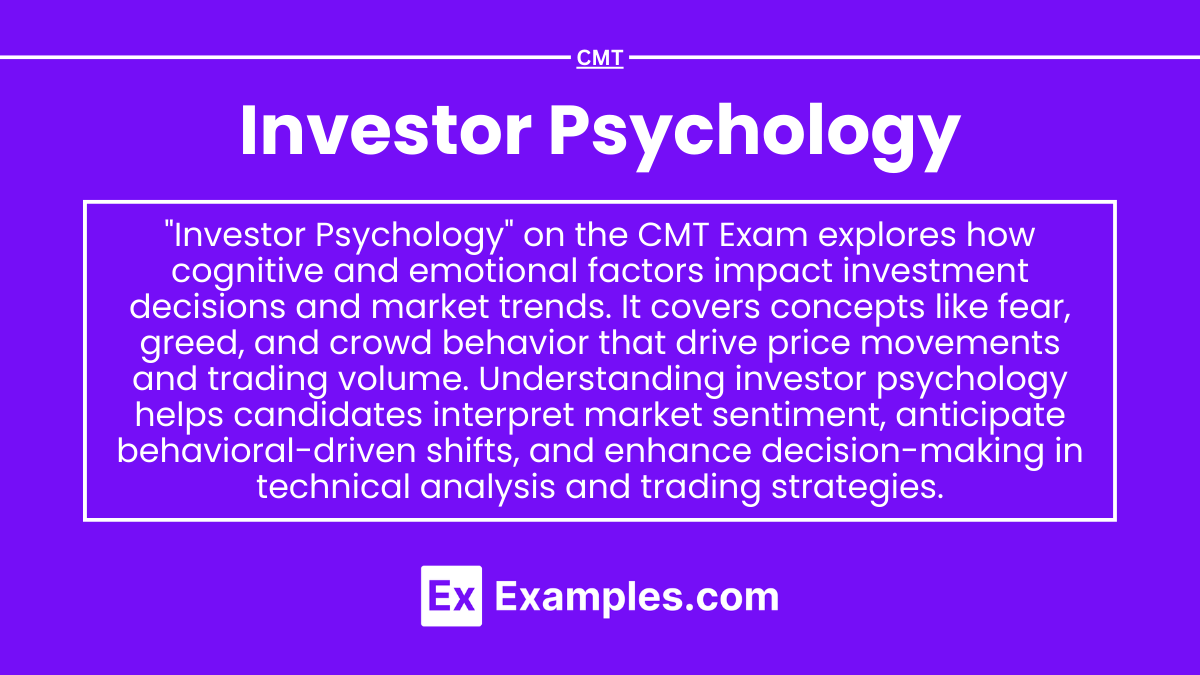Preparing for the CMT Exam requires a comprehensive understanding of “Investor Psychology,” a crucial component of behavioral finance. Mastery of cognitive biases and emotional influences on trading behavior is essential. This knowledge provides insights into market anomalies, trading patterns, and investor decision-making, critical for achieving a high CMT score.
Learning Objective
In studying “Investor Psychology” for the CMT Exam, you should learn to understand how psychological factors and cognitive biases influence investor behavior and decision-making processes in financial markets. Analyze how emotions and mental shortcuts, such as overconfidence, anchoring, and herd behavior, can impact trading strategies and market outcomes. Evaluate the principles behind theories like prospect theory and the disposition effect. Additionally, explore how these psychological dynamics contribute to market trends and anomalies. Apply this knowledge to improve your ability to anticipate market movements, manage investment risks, and develop strategies that account for the irrational behaviors often exhibited by market participants.
Introduction to Investor Psychology

Investor psychology, also known as behavioral finance, explores how emotional and cognitive biases influence investors’ decisions and behaviors, impacting financial markets. This field integrates psychology with economics to understand why and how investors often make irrational financial decisions that deviate from those predicted by traditional economic theories. Here’s an introduction to the fundamental aspects of investor psychology:
Core Concepts of Investor Psychology:
- Emotional Biases: These are consistent, predictable, emotion-driven errors that influence investors’ decisions. Common emotional biases include:
- Loss Aversion: The fear of losses leads to decisions that avoid losses rather than maximize gains.
- Overconfidence: Excessive confidence in one’s own decision-making ability, often leading to increased trading frequency and higher risk-taking.
- Cognitive Biases: These biases arise from the way people think and process information, often leading to systematic errors in judgment. Examples include:
- Confirmation Bias: The tendency to search for, interpret, and remember information in a way that confirms one’s preconceptions.
- Anchoring Bias: Relying too heavily on the first piece of information seen (the “anchor”) when making decisions.
Cognitive Biases Impacting Investment Decisions

Cognitive biases are psychological tendencies that cause individuals to deviate from rational judgement, often leading to suboptimal investment decisions. Understanding these biases can help investors recognize their own predispositions and potentially improve their investment strategies. Here are several key cognitive biases that commonly impact investment decisions:
- Anchoring Bias
- Investors may overly rely on initial information, such as the first stock price they encounter, which can skew subsequent investment decisions.
- Confirmation Bias
- This leads investors to seek information that confirms their existing beliefs while ignoring contradicting data, potentially resulting in holding onto poor investments.
- Overconfidence Bias
- A tendency to overestimate one’s own investment skills or information accuracy, often leading to excessive trading and higher risks.
- Loss Aversion
- The fear of losses drives investors to avoid selling underperforming assets to prevent realizing a loss, potentially missing opportunities to invest in more profitable areas.
- Recency Bias
- Giving undue weight to recent events or trends, which may lead to reactionary investment decisions, such as buying high and selling low.
- Herd Behavior
- Following the majority without independent analysis can lead to participating in financial bubbles or panics.
- Mental Accounting
- Treating money differently based on its origin or intended use, which can lead to inefficient allocation of resources.
Applying Psychology to Trading Strategies

Applying psychology to trading strategies involves understanding the mental and emotional aspects that influence traders’ decisions. By incorporating psychological insights, traders can develop more disciplined and effective trading strategies that help mitigate emotional biases and improve decision-making. Here’s how psychological principles can be strategically integrated into trading:
Strategies for Applying Psychology to Trading
- Behavioral Checklists: Creating a checklist of behavioral do’s and don’ts based on psychological principles can help maintain discipline and consistency in trading practices. This checklist could include items like confirming evidence before executing a trade, reviewing past trades for learning, and setting pre-determined stop-loss and take-profit points.
- Risk Management Techniques: Establishing strict risk management protocols can counteract emotional decisions. This involves setting clear criteria for risk-reward ratios, diversifying investments, and consistently applying stop-loss strategies to protect against significant losses.
- Automated Trading Systems: Utilizing automated trading systems can remove emotional influence from trading decisions. These systems execute trades based on technical analysis and predefined rules, ensuring that strategies are followed without emotional interference.
- Psychological Training: Regular training and workshops on topics such as emotional intelligence, cognitive biases, and stress management can equip traders with the tools they need to handle the psychological pressures of trading.
- Performance Reviews: Conducting regular reviews of trading performance, focusing on the decision-making process and its outcomes. This review should assess not just financial performance but also evaluate how well psychological aspects were managed.
Examples
Example 1: Overconfidence Effect
A trader overestimates their ability to predict stock price movements based on recent successes, leading to increased trading volume and higher risk-taking. This overconfidence might result in significant losses when market conditions change unexpectedly, demonstrating the risks associated with this cognitive bias.
Example 2: Anchoring in Asset Pricing
Investors anchor their valuation of a stock to its initial public offering price or a recent high. When the stock’s price falls significantly below this anchor, investors may perceive it as a bargain without considering changed fundamentals, leading to poor investment decisions based on outdated information.
Example 3: Herd Behavior During Market Bubbles
During the dot-com bubble, investors collectively believed in the unprecedented potential of internet companies, leading to a market bubble. Herd behavior encouraged more investors to buy into these stocks at inflated prices, which eventually led to a crash as the underlying value did not support such high prices.
Example 4: Loss Aversion and Portfolio Management
An investor holds onto a losing stock too long, unable to sell and realize the loss. This behavior is driven by loss aversion, a tendency to prefer avoiding losses rather than acquiring equivalent gains. The investor’s portfolio suffers as the capital tied up in the losing stock could have been redeployed more effectively.
Example 5: Disposition Effect in Tradin
A trader quickly sells shares that show a small profit but holds onto shares that have declined in the hope they will rebound to their purchase price. This disposition effect can lead to suboptimal portfolio performance because the trader might miss out on greater gains from the winning stocks and larger losses from the losers.
Practice Questions
Question 1
Which psychological bias might cause an investor to hold onto a losing stock too long?
A. Overconfidence
B. Loss aversion
C. Confirmation bias
D. Anchoring
Answer:
B. Loss aversion
Explanation:
Loss aversion is a psychological bias where investors show a preference for avoiding losses rather than making gains. This bias can cause investors to hold onto losing stocks for too long, hoping to at least break even rather than cutting their losses and reallocating funds more effectively.
Question 2
What does herd behavior in the financial markets imply?
A. Investors making decisions based on individual analysis
B. Investors making decisions based on technical indicators
C. Investors following market trends initiated by a majority
D. Investors operating independently of market trends
Answer:
C. Investors following market trends initiated by a majority
Explanation:
Herd behavior refers to investors following the actions and behaviors of the majority without individual critical analysis. This phenomenon can lead to amplified market movements, such as bubbles and crashes, as investors collectively rush to buy or sell assets.
Question 3
Which bias involves focusing only on information that confirms pre-existing beliefs and ignoring contrary evidence?
A. Anchoring
B. Overconfidence
C. Confirmation bias
D. Herd behavior
Answer:
C. Confirmation bias
Explanation:
Confirmation bias is a cognitive bias where individuals favor information that confirms their existing beliefs or hypotheses, disregarding evidence that contradicts their initial perceptions. In investing, this can lead to poor decision-making as investors might overlook critical negative information that could impact their investment negatively.


